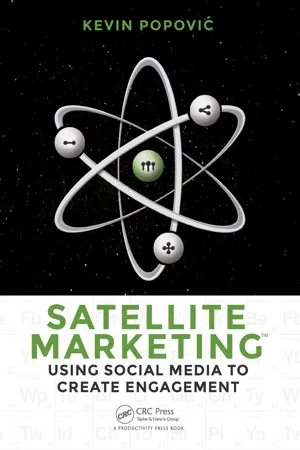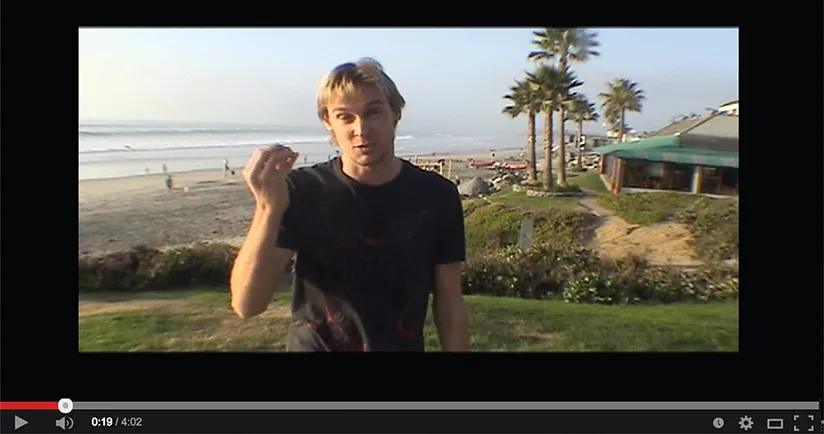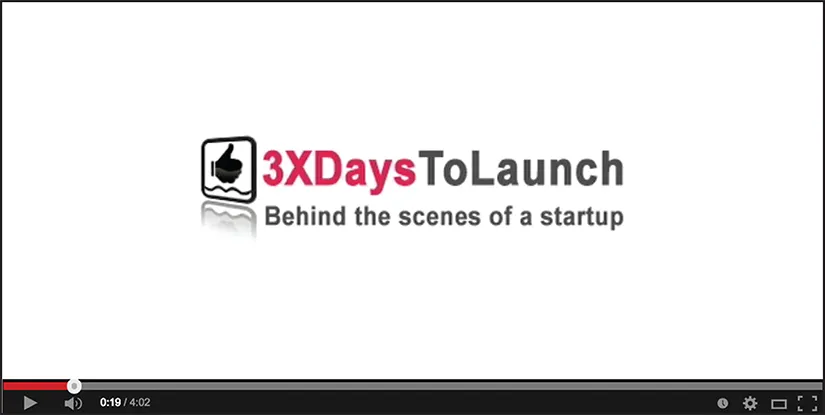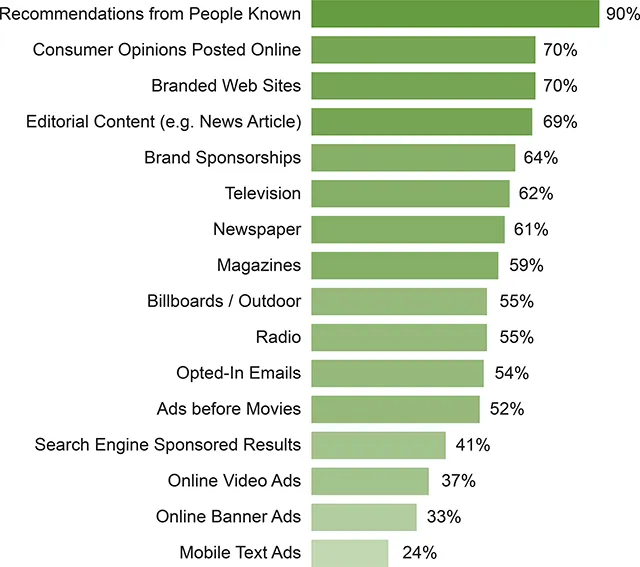The Origins of Satellite Marketing
In October of 2006, our agency was contracted to produce a video documentary for a startup. The business was called MojoPages, one of the first consumer-rated service directories online (think Yellow Pages with comments and rating stars) from the people who used their services, like Angie’s List or Yelp.
The working title of the project was “30 Days To Launch: Behind the Scenes of a Startup*.” The idea was simple: Produce a weekly program showcasing the behind-the-scenes efforts of a group of young entrepreneurs in Southern California as they move from concept to corporation. “30 Days to Launch” had all the makings of a reality show by design—a cast of characters, a luxury beachfront set, and a storyline about making millions. Instead of an on-air broadcast, the video series would be available from video-sharing sites, such as YouTube, Veoh, and Vimeo. An audience scattered across the Internet could watch MojoPages start its company from the ground up in only 30 days to build their brand recognition, attract partners and investors, and, perhaps, get famous along the way.
My role began as cameraman / producer / director—an embedded reporter capturing the behind-the-scenes action of the organization in daily crisis. I would also capture the drama (yes, drama) of five men coming together to build a company under the leadership of a blonde-haired boy wonder (you’re welcome, Jon Carder).
Viewers could watch an episode the day it “aired” (became available on the site) or on-demand (when their schedules permitted). They could watch it themselves or with their friends, they could share the link with a colleague, and they could engage by leaving comments on the video for the characters in the show. The content was always available.
In addition to the weekly videos we were responsible for producing, publicist Ray Drasnin was hired to approach the media for news coverage. Ray’s job was to develop an idea for a story, dial every TV and print editor on a well-crafted list of media outlets, then pitch with a furious vengeance until someone told him they would do a story on MojoPages. With our shows being hosted on video-sharing sites, Ray shared a link to the video assets for his e-mail pitch to the media. Editors appreciated seeing what Ray was talking about during his phone pitch and getting to know the people behind the story before they committed to sharing MojoPages with their respective audiences, to which they did.
Rodney Rumford was an early pioneer of the Internet and was contracted to create interest from what, at the time, was called “the blogosphere.” The Internet’s version of the media, Rodney was leveraging his relationships with the writers and editors of the more popular blogs to help tell the MojoPages story online. Rodney shared the link to the videos with the bloggers he was pitching for the same reason—exposing the new business to new people. When bloggers bought into our storyline, they embedded (shared) our video episodes into their blog posts to share with their audience.
In our individual efforts, we were able to accomplish our expected goals. Some people watched our videos, some of the media wrote about MojoPages, and some bloggers wrote about the new idea for an online company. Like many people, you may be interested to learn how they were able to launch an online company—including securing the funding—in only 30 days.
They didn’t.
What was supposed to take 30 days took more than 120, and a contract for four episodes turned into an extension to produce 14. On week five, we started planning further in advance because it didn’t look like this was going to be just another week or two.
As we continued planning our individual efforts, building off the best practices we were learning, we began seeing patterns in what we had accomplished. Ray got CEO Jon Carder placed on the cover of Fortune Small Business. Rodney got a blogger to write a post about the front cover. I included Jon thanking Fortune Magazine and the blogger for covering MojoPages in our video. We changed these typically one-to-one closed connections into an infinite loop of open communication, which, as we discovered, kept everyone talking (perpetually) about the other.
A blogger would write about MojoPages, saying “thanks” for the mention in the video. Then, the media would write about the support we were getting from the bloggers, and we would thank the new list of supporters in the next video. Each of our singular audiences was interested in the content from the others. The more we continued with this cycle of integrated communication, the more momentum we created for the business, and the more media coverage MojoPages received, and the more support we received online.
There was something to this. People were engaged.
MojoPages was transparent, by design, which meant we shared everything with the public. From the CEO’s vision, to the concerns with the COO—even the challenges getting funding from the CFO—our audience saw it all from us first on YouTube, as it happened. They saw the people behind the titles; they got to know them—faults and all, they saw the success and failure, and the audience trusted them for doing so.
With each new episode, we created opportunities for MojoPages; we attracted new partners, investors knew our pitch before we showed up, and users were counting down the days until we opened for business. What we would soon realize was that we discovered how to create engagement—an interaction between MojoPages and their audience. By integrating multimedia content with traditional public relations tactics and the growing Internet community, we created word-of-mouth with all our target audiences. We were getting MojoPages in front of the right people, and the numbers proved it. Partners were not only open to deals, but they were making them. Investors were not only taking our meetings, but they were investing.
And before we even launched MojoPages, we had a higher Alexa Internet rating (web traffic analysis) than any of our competitors already open for business.
Mission accomplished. Or was it?
Admittedly, in 2006 this strategy wasn’t something we had used before—it was a new tactic with a new ingredient: the Internet. Sure, our client was ecstatic that the strategy worked, but as a marketer and an academic, I wanted to learn why it worked. If we could repeat this success for other clients, in other markets, we would have something of great value.
Why It Worked
In 2009, a Nielsen “Trust in Advertising Report* was released which helped shed some light on why we had been so successful creating engagement: “Global advertising consumers trust real friends and virtual strangers the most.” Word-of-mouth was identified as “the most powerful selling tool” available.
Recommendations from people who knew MojoPages created more trust (90%) among the people they knew than any other type of advertising. The positive comments people were posting online generated the second highest amount of trust (70%) among people they did not know. The MojoPages website, which included daily insights from every department of the company, statistically generated as much trust (70%) as the editorial content from newspapers, magazine, television and radio (69%). We surrounded our audience with the four most effective types of advertising, and it worked.
The strategy for MojoPages created engagement because people were talking about MojoPages. People wrote good things, people read what other people wrote and then wrote more positive comments; more people read those. What the audiences read about the company they liked, what they saw in the videos about the people who were creating the company they talked about, and everyone wanted to see them succeed because they felt like they each had a little stake in it all. And they did.
Where Satellites Come From
With the public success of MojoPages, I was asked by a client to present what we learned about social media for business as a lecture to a conference of educators. With the emergence of social media as a communications channel, most businesses were very interested in learning what it was and how it worked—even schools. As a business looking for ways to engage with the early adopting student demographic, social media was of particular interest to those in admissions (aka, sales).
In the audience would be the CEOs, VPs and management of the attending schools, most technologically capable (at worst), familiar with the conventional marketing of their business and aware of the emergence of a new “social” media. There would also be owners, board members and trustees in attendance, most in their sixties and seventies, who did not have a comfort level with technology and surely would have no idea about anything called “social media.”
Admittedly, I was a bit perplexed. How could I best explain social media, let alone the strategic use of content marketing for engaging prospective students, to an audience as old as my grandfather? I needed to draw an analogy for them, for everyone—even myself—to better explain how this was working and why it was important to their business.
I titled my presentation, “The State of Communications - How Social Media Changed the Way We Communicate,” to introduce the new subject matter in context and was intent on keeping this simple. I even used the PowerPoint template that looks like a chalkboard to make the material more familiar to the educators in my audience.
After I was introduced, I surveyed my audience, “How many people use social media?” Roughly half of the audience raised their hands. My follow-up, “How many people have no idea what social media is?” raised the other hands, mostly the older audience who concerned me in the first place.
I started with what they all knew: There were many different types of people that the school wanted to speak with, for different reasons.
Prospects
Students
Alumni
Parents
Staff
Faculty
Employers
Industry
Government
Media
Owners
Management
Next, I revisited each type of person to discuss how we could reach them using conventional marketing. “In the past,” I started, “to connect with prospective students, the schools used conventional marketing tools, like ope...



